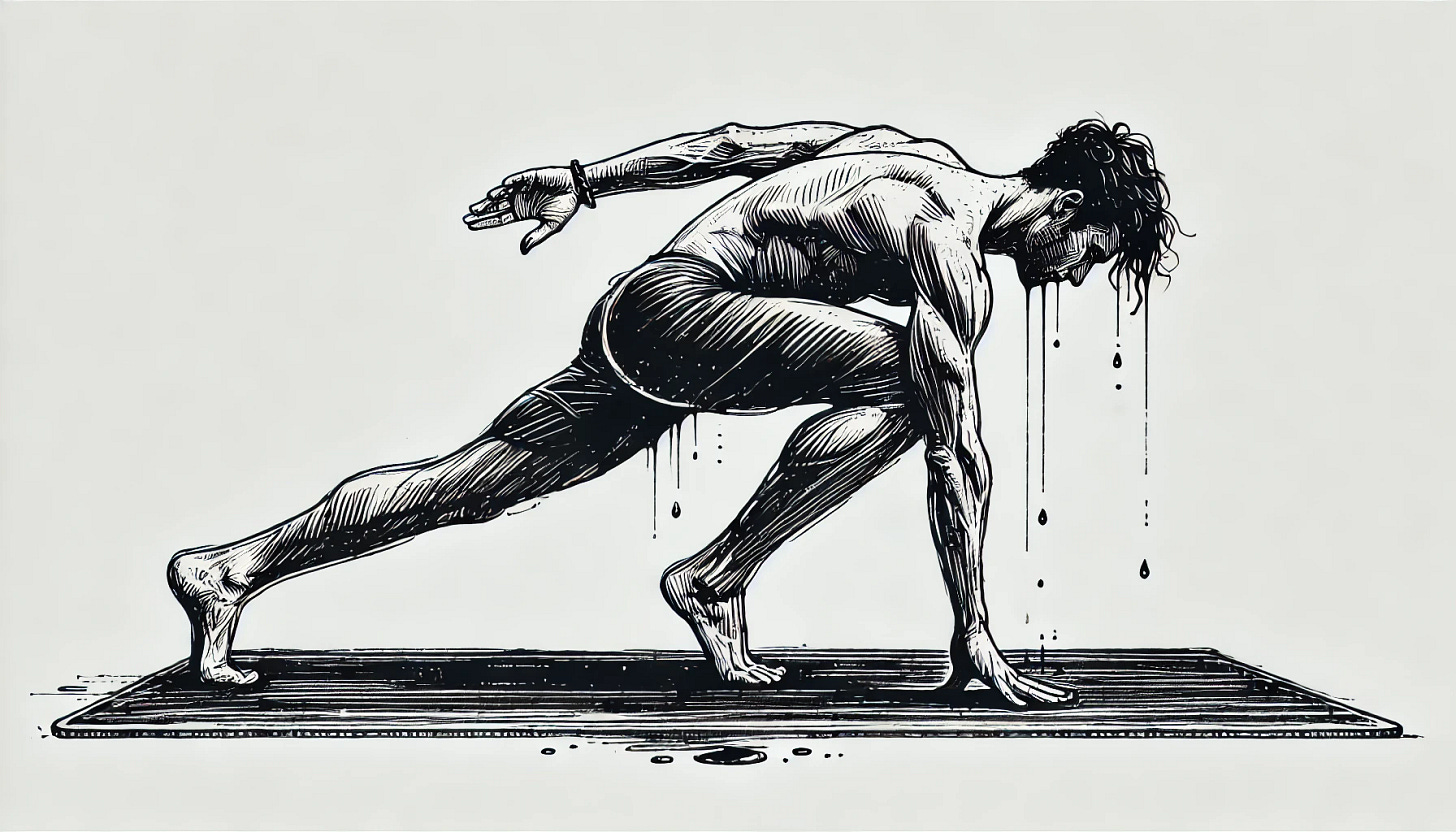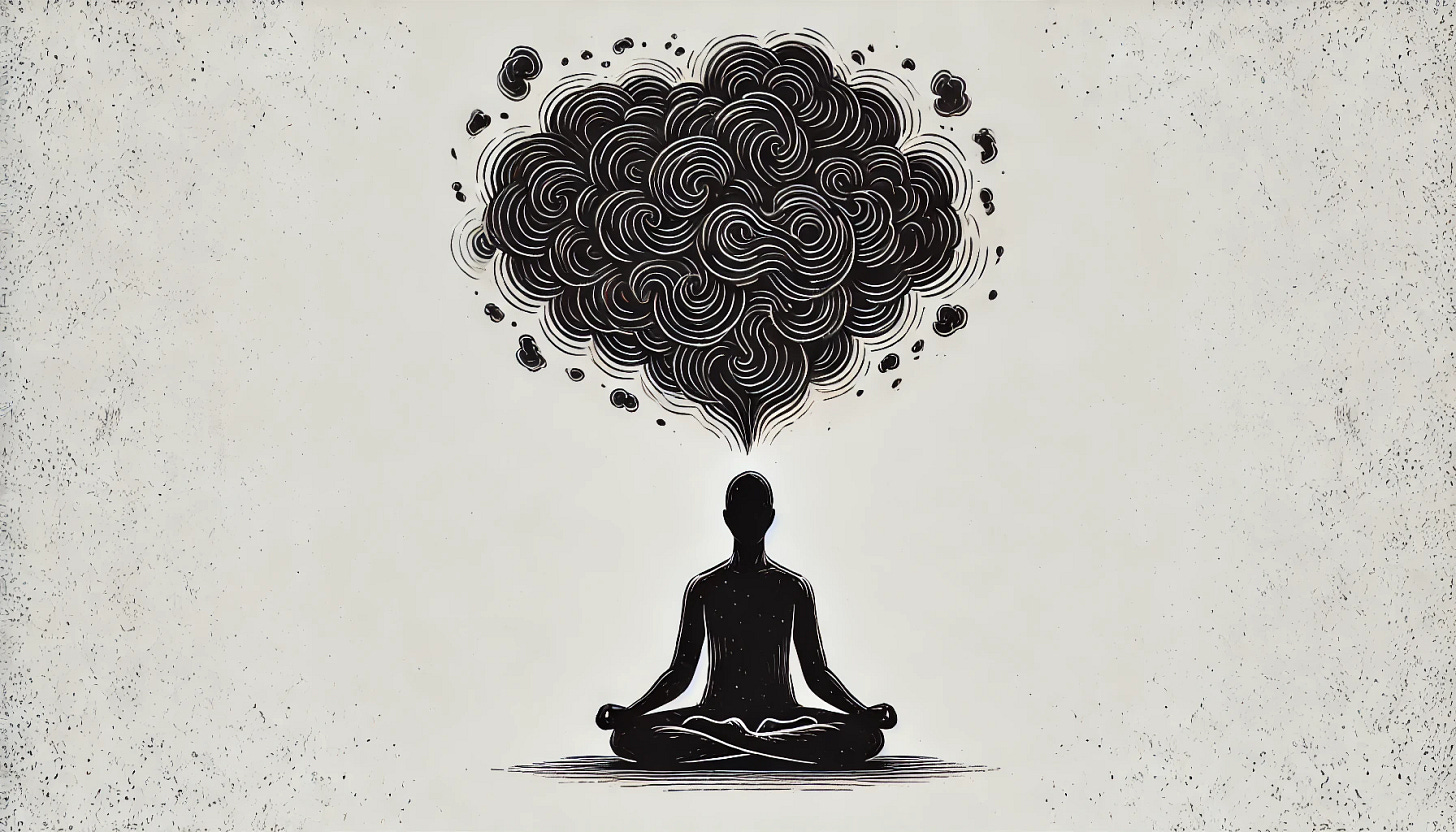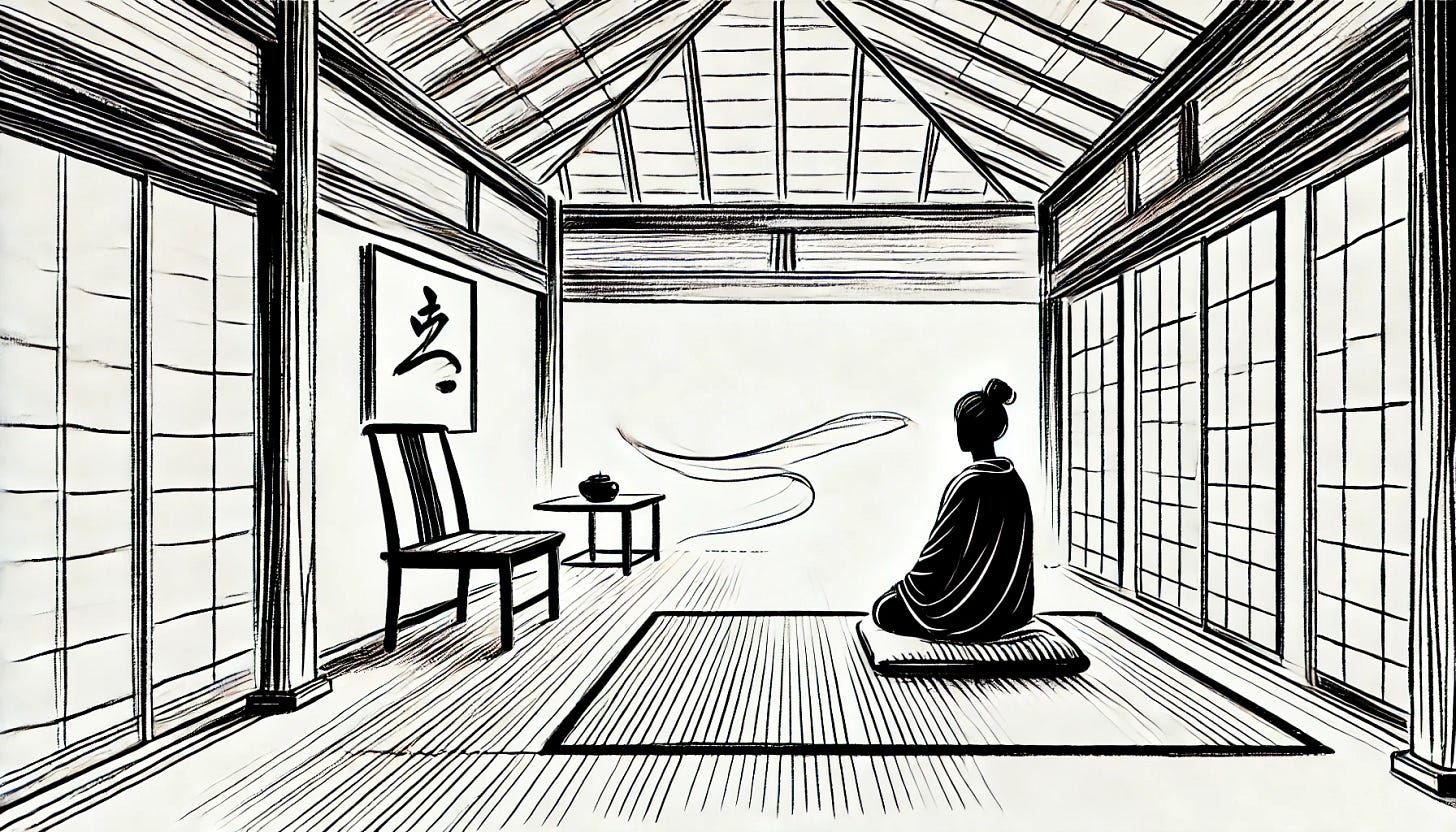What Precedes Thought?
Sutra 4: Vṛtti-Sārūpyam Itaratra — At Other Times, The Self Appears to Identify With The Fluctuations Of The Mind.
From Sri Swami Satchidanada’s commentary on The Yoga Sutras of Patanjali:
That is why, if we could calm our minds and get to the basis of all these [mental] modifications, we could find the unity among everything. That is the real Yogic life.
There it is.
The underlying point of bending your body to-and-fro on a mat.
Flexibility and muscular pliability are by-products of working towards a much greater task.
Finding the unity among everything—
— by arriving at the basis of all these undulating appearances in the mind.
The physical practice of asana provides a baseline for this greater practice by it’s emphasis on first experiencing unity within one’s own mind and body.
The mental relaxation and peacefulness we associate with that state are themselves temporary states occasioned after periods of practice when we step fully into this work. And it is work. Don’t let anyone fool you into thinking it should be easy — including yourself.
The true aim is to touch the substrate.
In other words, to answer the question: “what is underneath all of these swirling thoughts?”
Most of us walk around with some form of internal conversation constantly chattering in the background. Telling ourselves what’s going on, how good it is, naming things we see, identifying things we like or don’t like.
There’s that song you’ve had stuck in your head for who knows how long (probably saying the wrong lyrics too). The same dumb verse from a pop song you pretend not to like…
“There goes a Tesla again. It’s sunny today. Where did I leave my sunglasses? I should get a smoothie today. No, too expensive. But baby, I’m worth it. Neh nah nah la la la.”
It’s frustrating as hell. But the fact that you can even be aware of your mental chatter in that way, regardless of whether you have “control” over it, shows that something is different.
Truly, at the beginning, mindfulness practice, yoga, and meditation can actually create an apparent net negative for your state of being.
Before you tried a forward fold, did you know how tight your hamstrings were? Did you care?
Similarly, noticing that internal mental chatter can be like noticing a huge pimple on your forehead, but not be able to do anything about it.
You can squeeze it out all you want, but it just keeps reforming. Life was much simpler before you noticed it in the first place, but now that you’ve seen it, there’s no going back.
Maybe with the right mix of narcotics and a strong dash of nihilism, you can deactivate the necessary portions of your brain needed to make it seem like you’ve forgotten (for a while at least).
But the truth is simply that it’s just really fucking hard to stop thinking. Impossible is probably a better word.
That’s why most of the modern self-help schools of thought focus instead on changing the character of that internal narration. It’s an undeniably bad thing to walk around telling yourself how terrible you are or how awful the world is.
But merely replacing that with telling yourself how great you are and how awesome the world is…only slightly better, in my humble estimation.
The theoretical “better” results you get from life while walking around with a smile, however real or fake it is, are more so due to the fact that we live in conjunction with other human beings as part of a society where psychological nuances (such as the feeling you get when someone smiles at you) play a major role in one monkey with more or less societal power deciding to help or harm another monkey with more or less societal power. I’d recommend being extremely skeptical of any guru that seeks to claim these material things as the results of a better metaphysical alignment of one sort or another that stems from an additional modification of the mind such as “thinking positive” or “manifesting”.
If you want to keep playing that same game, go ahead. There are still chips on the table and thrills to be found…for now.
But if you’re as sick of that game as I am—if you want to fundamentally change the world—let’s start by finding a way underneath all these mental modifications (chitta vritti) and learn to see ourselves and one another for who and what we truly are.
The Fourth Yoga Sutra:
Vṛtti-sārūpyam itaratra
वृत्तिसारूप्यमितरत्र
At other times, the self appears to identify with the fluctuations of the mind.
Remember that this sutra can read as a continuation of the sutras that came before —
Now begins yoga
Yoga is the restraint of the fluctuations of the mind-stuff
Then the Seer abides in its true nature
At other times, the self appears to identify with the fluctuations of the mind
In a yoga practice, we are working to drop the mind out of the externalized projections with which it normally is preoccupied. By attempting to focus on the breath and movement, those two things become objects in our conscious experience that serve as reference points for us to be able to notice when the attention has been hooked onto something else.
In many ways, it’s a practice of disruption.
If yoga is the practice of bringing the mind and body into union (or whatever way you want to translate the word Yoga — yuj: “to unite”) it implies that:
mind and body have been separated by some force
whatever flow they have been being moved by (separately) necessarily needs to be shifted in order for them to sync again
We generally hold the notion that consciousness emanates from the head like a spotlight shining on the world at large, enabling us to perceive one thing or another that appears in material reality.
If you sit on a cushion here and look across the room, you might say:
“Over there is a chair”
If someone asks you who you are, depending on context, you might answer with your name and title.
“I am Jack the yoga instructor”
But both of these statements are based on mental constructs. When you see wood cut and arranged into a form that provides a flat surface for someone’s butt to perch on, you think: chair.
That’s merely a name associated to communicate its function. These names are, of course, useful in helping us navigate the world efficiently.
If someone asks you “where can I sit?” and you said “on the wood” they’d be less likely to understand what you mean.
They’d be even less likely to understand if you said: “on the energy vibrating slowly enough for you to perceive it as the form of organic matter that sprouted from the soil 100 years ago and gradually hardened into a cellulose material strong yet pliable enough for one of our ancestors to cut it into pieces with an axe and fashion it into the thing you can see over there in the corner…”
Maybe they’d have already decided they’d rather not sit near this crazy person and left the room before you could finish speaking that 20 second sentence. In any case, “chair” is simply more practical.
The debilitating sense of separateness arises when we spend so much time engaging with these named concepts that we forget about their underlying nature.
It’s a very good thing to be able to distinguish a tiger from a house cat. But over time, all this subdividing and categorizing leaves us trapped in smaller and smaller perspectives.
Calling the tiger a tiger does nothing to change its nature. All that’s changed is your predictions about its behavior. As your mind evaluates: “Oh shit, that’s a tiger. It’s looking at me and crouching. I know they crouch before they pounce. I better get out of here.”
Similarly, calling someone a jerk when they cut you off in traffic does nothing to change their nature. But it does add an additional layer over your conscious perception of what’s happening in front of you.
That other human over there is not only a being having a similar conscious experience as you (just a car length before yours) they are also now a “jerk” and all the things you assume come before or after that concept.
Over time, we can begin to (mis)identify ourselves with these same constructs. “He’s a jerk, I’m not. I’m a nice person. I guess that’s why they say nice guys finish last. Ho hum.” That’s what this sutra is pointing out.
When the fluctuations of the mind are restrained, the Seer abides in its true nature.
At other times, the self seems to identify with those fluctuations.
The Swami presents us with the simplest way to approach this idea:
Suppose I ask you who you are … If you say, “I am a man,” you have identified yourself with a masculine body. If you say, “I am a professor,” you are identifying with the ideas gathered in your brain. If you say, “I am a millionaire,” you are identifying with your bank account; if “a mother,” with a child; “a husband” with a wife. “I am tall; I am short; I am black or white” shows your identification with the color and shape of the body. But without any identifications, who are you?
Without the names and labels, who are you? What are you? And…are you?
Here’s a clip from Alice in Wonderland to maybe help expound on this point in ways that the profundity of old school animation only seems able to touch.
There’s a lot more going on in this scene than I can breakdown with the space I have left here. I will publish an extended essay on it some other week.
In the most basic sense, Alice is representative of those of us stumbling through life feeling small and unsure, passing through experiences that seem wildly magnified in comparison with the tiny corner of the world we appear confined to (in our identities). When confronted with the question:
“Who are you?”
The most honest reply Alice can muster is that she’s not sure. And she asks the caterpillar to tell her who he is first. It’s often seemingly much easier to define oneself based on ones surroundings, or via negativa (by defining that which we are not first).
If you find yourself holding a pickaxe in a tunnel, you must be a miner.
If you play an instrument well and people pay to hear your sounds, you must be a musician.
If you enjoy running, you’re a runner.
So we wrap ourselves in layers and layers of identity that serve to distinguish ourselves from all the things we see around us. Again, on a core level of survival, it helps to know which mouth is yours to put food into each day, if you want to stay alive.
But the yogic path challenges us to see underneath all these layers.
More accurately, the yogic path provides a set of practical actions that you can take to begin experiencing yourself as the pre-condition to all the projected thoughts and occurrences that appear in your conscious field of awareness.
Before the definitions, the names, and constructs — what is the nature of your experience?
Are you the contents of consciousness? Or consciousness itself?
Practicing the process of peeling back those layers and attempting to focus purely on the movement and breath strengthen the only “muscles” worth building while on your yoga mat — perception and awareness.
When we repeatedly experience ourselves as the space in which all things are occurring, rather than as the character moving around in the landscape we seem to see from our place in the world, we are beginning to see the pre-condition to our minds.
That’s the stuff of which we are all made.
That’s the substrate.
Sri Swami Satchitanada describes it as “the unity of all things” which can be as profound and meaningful as you want it to be, or as obvious and simple as it is. But in so much as it serves to disrupt the misapprehensions of reality that color our kaleidoscopic world with strokes of hate, oppression, and fear — it can truly be a revolutionary recognition.
That is why, if we could calm our minds and get to the basis of all these modifications, we would find the unity among everything. That is the real Yogic Life. That does not mean we are indifferent to the changes and become useless to the world. Instead, with this experience of universal unity, we function better. We will have happy and harmonious lives. Only then can we love our neighbors as our own Self.
As Alan Watts refers to it in one of his more famous discourses, coming into contact with this “unspeakable world” (which exists prior to any constructed form of naming or comprehension possible in our subjective minds) is where I believe we can form the basis for a new, healthier, and sustainable understanding of who we are in relation to other people and the world at large.
You can’t love what you don’t know.
We don’t even know ourselves.
So it’s no wonder we can’t seem to love each other.
Vṛtti-sārūpyam itaratra
वृत्तिसारूप्यमितरत्र
At other times, the self appears to identify with the fluctuations of the mind.
Let’s break this pattern, together.





